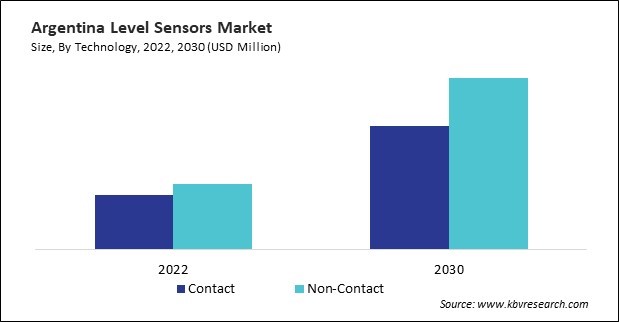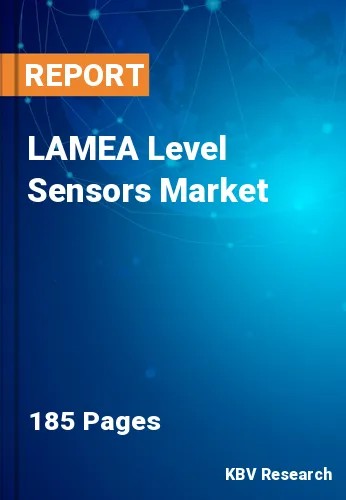The Latin America, Middle East and Africa Level Sensors Market would witness market growth of 11.3% CAGR during the forecast period (2023-2030). In the year 2026, the LAMEA market's volume is expected to surge to 3096.7 thousand units, showcasing a growth of 12.9% (2023-2030).
In the level sensors market, consumers span a wide array of end-user industries, each with distinct needs and applications. Industrial manufacturing stands as a primary consumer, relying on level sensors for precise monitoring and control of liquid and solid levels in tanks, silos, and production processes. Therefore, the Brazil market utilized 114.48 thousand units of level sensors in consumer segment in 2022.

The Brazil market dominated the LAMEA Level Sensors Market by Country in 2022 and would continue to be a dominant market till 2030; thereby, achieving a market value of $226.3 million by 2030. The Argentina market is showcasing a CAGR of 11.9% during (2023 - 2030). Additionally, The UAE market would register a CAGR of 11% during (2023 - 2030).
Level sensors are integral components of automated systems. They help monitor and control the level of materials in tanks and containers without manual intervention. This improves operational efficiency, reduces the risk of human error, and enhances safety. The increasing adoption of Internet of Things (IoT) technology in industrial applications is also a factor in the expansion of the level sensors market. It is expected that by 2025, there will be over 20 billion connections to the IoT, compared to 15.1 billion in 2021. IoT-enabled level sensors can provide real-time data on substance levels, allowing for better monitoring and control of processes. These sensors can also be integrated with other IoT devices and systems, enabling more advanced and intelligent automation solutions.
Additionally, innovations in level sensor technology, such as developing smart sensors that can provide advanced features such as self-diagnosis, self-calibration, and remote monitoring, are further increasing the use of level sensors. These sensors can help reduce maintenance costs and downtime and improve overall system performance. The level sensors market is also witnessing developments in terms of materials and construction. Manufacturers increasingly use materials such as stainless steel, ceramics, and plastics to improve sensor durability and resistance to corrosion. Additionally, there is a growing trend towards the miniaturization of sensors, enabling their use in smaller containers and devices.
The healthcare sector is a priority for the Saudi Arabian Government (SAG) as it is the largest share of state budget allocations. This has led to significant progress over the past decades. Through the Kingdom’s Vision 2030 strategy, Saudi Arabia seeks to strengthen its standards and quality of medical and healthcare services through projects led by public-private partnerships (PPP). Hence, all these factors will aid in the growth of the market.
Free Valuable Insights: The Worldwide Level Sensors Market is Projected to reach USD 9.6 Billion by 2030, at a CAGR of 8.7%
Based on Technology, the market is segmented into Contact (Guided Wave, Magnetostrictive, Hydrostatic, Magnetic & Mechanical Float, Pneumatic, and Others) and Non-Contact (Ultrasonic, Microwave/Radar and Others). Based on Monitoring Type, the market is segmented into Continuous Level Monitoring and Point Level Monitoring. Based on End User, the market is segmented into Industrial Manufacturing, Oil & Gas, Wastewater, Chemical & Pharmaceuticals, Consumer, and Others. Based on countries, the market is segmented into Brazil, Argentina, UAE, Saudi Arabia, South Africa, Nigeria, and Rest of LAMEA.
By Technology (Volume, Thousand Units, USD Billion, 2019-2030)
By Monitoring Type (Volume, Thousand Units, USD Billion, 2019-2030)
By End User (Volume, Thousand Units, USD Billion, 2019-2030)
By Country (Volume, Thousand Units, USD Billion, 2019-2030)
Our team of dedicated experts can provide you with attractive expansion opportunities for your business.

